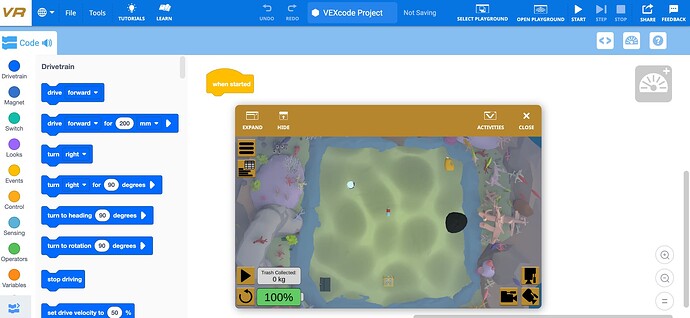As a teacher, I believe in creating environments where students can think for themselves. The real excitement comes when I see students solving problems in their own way—not just following instructions. I want them to think critically and independently, not just replicate what I’ve shown them.
That’s why I love using VEX VR in the classroom. Students are tackling real-world challenges like coral reef cleanup through robotics, and it’s amazing to watch them connect coding with meaningful, real-life applications. It’s not about memorizing steps or following a set pattern—it’s about solving problems creatively and learning how to think through complex issues.
What makes VEX VR stand out?
-
No Hardware, No Problem: You don’t need physical robots to teach robotics! VEX VR lets students program virtual robots, making it easy and cost-effective for schools to introduce robotics and coding. Plus, it’s a great way to jumpstart STEM programs without the need for additional resources.
-
Real-World Problem Solving: Students are using their coding skills to solve environmental problems, like cleaning up coral reefs. Watching them work through these challenges reminds me of how important it is to help students connect their learning to the real world. They’re not just coding—they’re making a difference.
-
Free and Accessible: One of the best things about VEX VR is that it’s free. There are no barriers to entry, which makes it perfect for any classroom. Students can also earn a certificate for completing challenges, which adds value to their learning journey and gives them something concrete to be proud of.
-
Understanding Autonomy in Robotics: The real complexity of robotics is teaching students how to create systems that run autonomously. Unlike traditional coding, where a program runs once, robotics code is designed to keep working independently. This teaches students not just how to code, but how to think critically about continuous problem-solving.
Growing up, I was always the kid who enjoyed figuring out how things worked. I remember taking apart gadgets just to see what was inside, understanding the mechanics, and putting them back together. That curiosity followed me into teaching, and now, I get to help my students develop the same curiosity and problem-solving mindset. I want to be the teacher who doesn’t just give answers, but who creates opportunities for students to think for themselves, challenge their assumptions, and find creative solutions.
If you haven’t explored VEX VR in your classroom yet, now’s the time to start. It’s an amazing, hands-on way to bring robotics, problem-solving, and independent thinking into your students’ learning journey.
What creative projects have you introduced with VEX VR? I’d love to hear how you’re using this tool in your classroom!

